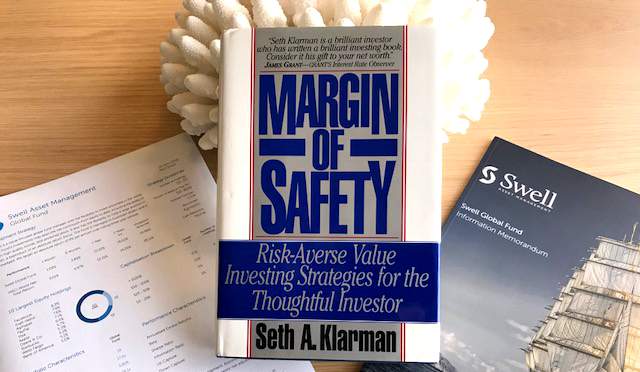Margin of Safety by Seth Klarman
Friday 25 May 2018
Book reviews
Seth Klarman is widely recognised as one of the greatest value investors of all time. He is CEO and Portfolio Manager of the Baupost Group, a hedge fund managing over US$31 billion. His book, Margin of Safety is a value investors’ classic. Klarman practically explains the philosophy of value investing and the logic behind it. It is this philosophy that has allowed Klarman the opportunity to carve out an enviable track record. This book builds on Ben Graham’s work in The Intelligent Investor, in fact, the title of the book is drawn from Chapter 20, Margin of Safety.
Some of Klarman’s contemporaries were disappointed that he disclosed his investment philosophy in the book. Could it allow other investors to replicate his process and thereby lower his future returns? Klarman says no. Value investing requires discipline, hard work and patience and for those reasons, it will appeal to a select few.
Value investing; the importance of the margin of safety
Value investing is the discipline of buying a security at a discount to its intrinsic value conservatively stated. Essentially, it involves identifying and purchasing undervalued companies. The buffer between a company’s value and price is known as its margin of safety. The larger the margin of safety, the larger the cushion against errors or misjudgements. This is the fundamental premise behind value investing.
While some businesses can be valued, some businesses cannot be valued. In these instances, the value investor must be prepared to move on to the next potential investment. There are many investments that may fail because they cannot be reliably valued. Reliability issues may stem from revenues and/or operating margins that are difficult to forecast, or worse still, questionable business models. In these instances, value investors must exercise patience and discipline, moving on to the next investment opportunity.
“Sometimes a value investor will review in depth a great many potential investments without finding a single one that is sufficiently attractive” – Seth Klarman
The art of business valuation
While Klarman believes that some businesses can be valued, he does not believe they can be precisely valued. We cannot expect precision in an imperfect world. If precision isn’t possible, he encourages us to think about each investment as a range of value e.g. $75 to $100. An exact value, like $82.50 implies a level of accuracy that is unattainable in the real world.
“Many investors insist on affixing exact values to their investments, seeking precision in an imprecise world, but business value cannot be precisely determined.” – Seth Klarman
Ben Graham, the father of value investing knew this.
“The essential point is that security analysis does not seek to determine exactly what is the intrinsic value of a given security. It needs only to establish that the value is adequate.” – Ben Graham
Since valuation is only an approximation, it makes sense to form up any investment’s valuation with a range of methodologies. Klarman recommends applying the following three.
- Net present value analysis: This involves forecasting cashflows and discounting those at an appropriate rate. Despite this method relying on many assumptions, it yields the most appropriate valuation estimate assuming the inputs are valid and able to be projected forward.
- Liquidation value: An approximation of value based on a conservative assessment of tangible assets. This is a theoretical exercise in valuation, but not usually an actual approach to value realisation. This involves a determination of each component part.
- Stock market value: This is an estimate of the value based on what multiple the stock would attract in the public market. This method is less reliable and Klarman cautions against its use. For example, this may involve a review of Mastercard’s business and the multiple ascribed to it by the market to form up a valuation on Visa Inc. Obviously, some adjustment needs to be made against future growth prospects, cash generation, and profitability.
The choice of valuation methodology will be governed by the company or assets being valued. Net present value will be appropriate for a consumer products company for example, with stable and predictable cash flows. However, for an unprofitable business, liquidation value which places an emphasis on the assets will be preferable.
“Each of these methods of valuation has strengths and weaknesses. None of them provides accurate values all the time. Unfortunately, no better methods of valuation exist” – Seth Klarman
When the valuation ascribed by each methodology diverges in a material way, Klarman advises we err on the side of conservatism. I believe the true benefit of this approach serves to lay a solid foundation allowing the enterprising investor the ability to weather any future storms which may arise.
I hope you enjoyed this discussion on valuation and the margin of safety. I look forward to bringing you my next review as we delve into the psychology of human misjudgement.
Disclaimer:
The information provided in this document is of a general nature only, is not personal investment advice and has been prepared without taking into account your investment objectives, financial situation or particular needs (including financial and taxation issues). Investors should read and consider the investment in full and seek advice from their financial adviser or other professional adviser before deciding to invest.




